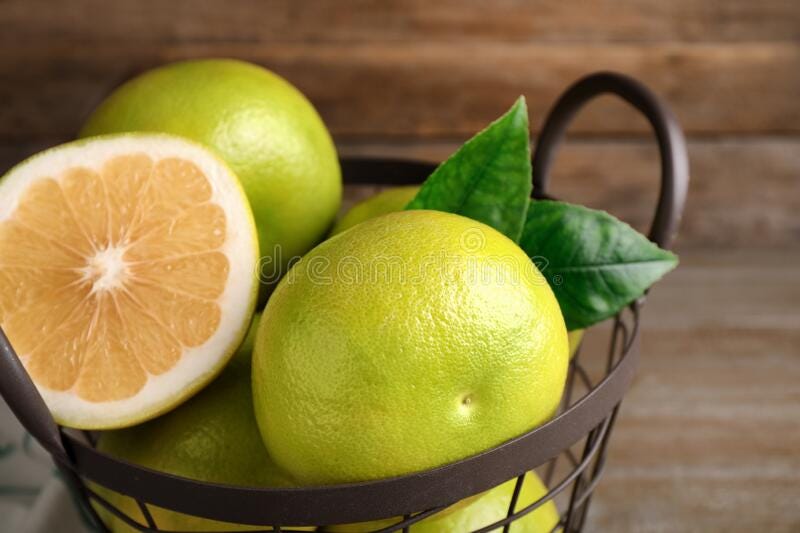In season from December through March in the San Francisco foodshed, the Oro Blanco is often confused with a grapefruit, a pomelo, or a pummello (and those two are something I may take on in a later missive). In fact, I’ve seen stores mix up which is which so it is no wonder it is confusing.
And why should I care, you may ask. What does it matter, if it looks like a grapefruit and smells like a grapefruit, who cares if it is any of those other things.
Well, dear friends, the Oro Blanco is a treat and one that should not be missed. It may look like a grapefruit, but it does not smell like a grapefruit. In fact, the first thing you will notice is that they look like a yellow or green grapefruit but the skin is a bit smoother. If you lightly run your nail across the skin, the delightful fragrance hits you. It is different than a grapefruit, and you will be able to tell. If you don’t like grapefruit, but like other citrus, this is definitely one to try.
So I encourage you to get one. And then once you get it home, just go ahead and open it up. To do this, I suggest you cut off some rind (or grate it) for other users and then cut through the skin and pith (which is thick!) to get to the lovely fruit. Peel or slice the rest of that pith away and pull the segments apart. Now it is ready to eat in its best state. The skin is thin, the thick white pith is almost as fragrant but very bitter. And then each lovely segment is bright and fresh and tangy and SWEET. This is the reason it was named the Oro Blanco, and was branded a Sweetie. It is fresh citrus at its best.
It’s green! Is it ripe? Yes. You don’t have to worry about the ripeness. If it is being sold, it is ready to eat.
If you are done eating them fresh, you can make sorbet. You can use the juice in a cocktail (I think it would be scrummy with some gin, a squeeze of lime and a little white vermouth and don’t forget to use the rind as a garnish.) A winter citrus salad would be a great place to add it in with others of its kind for a lovely dish.
Enjoy every mouthful!






